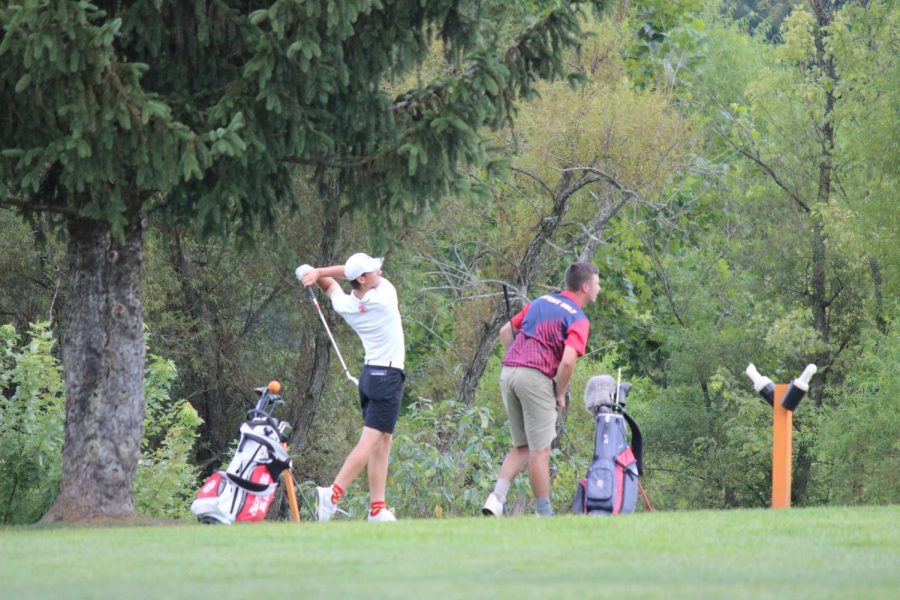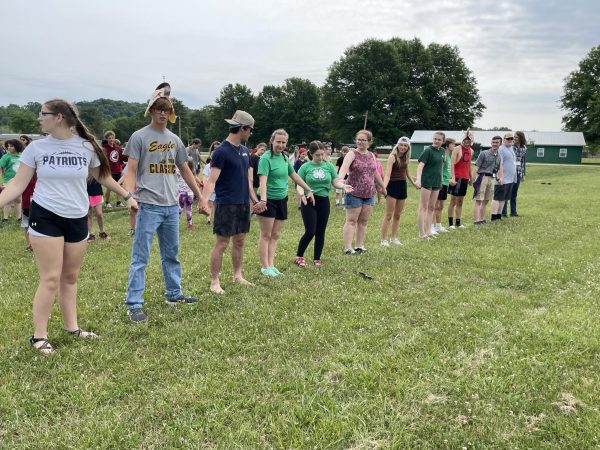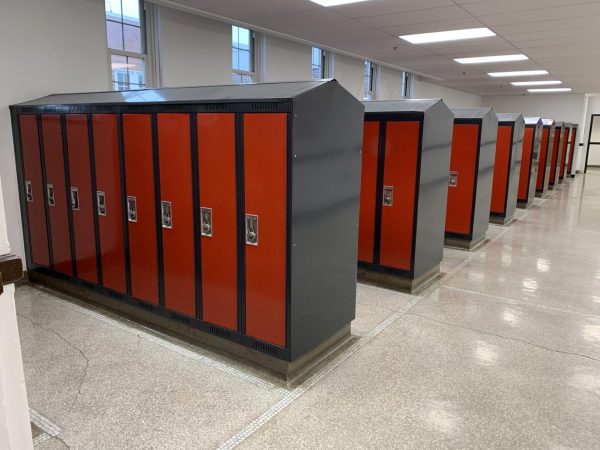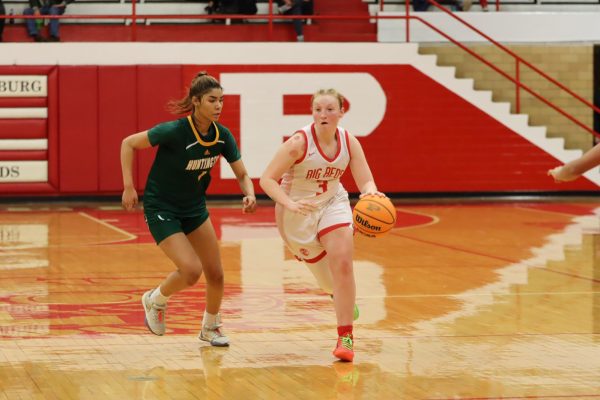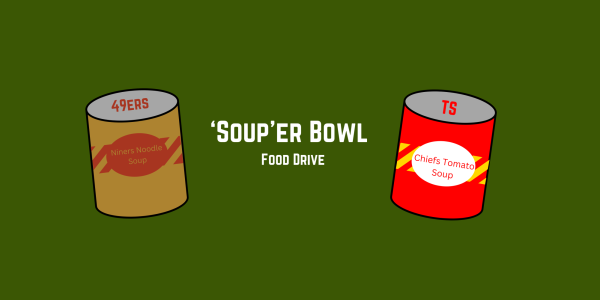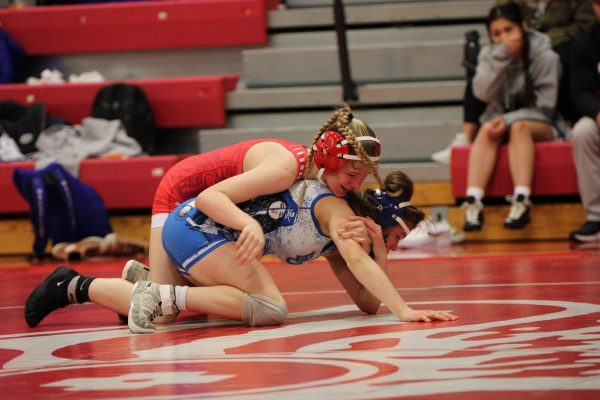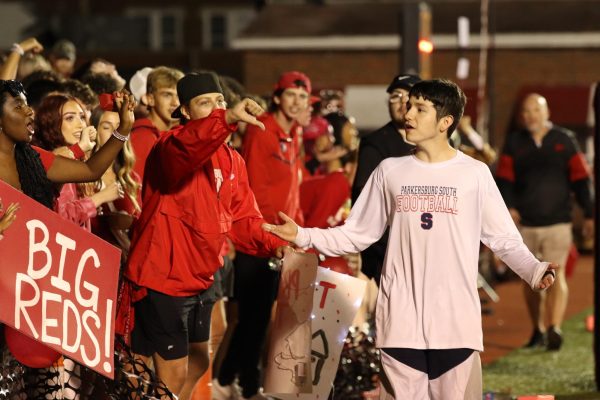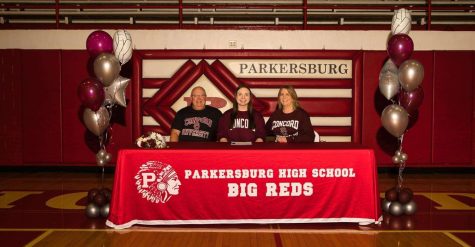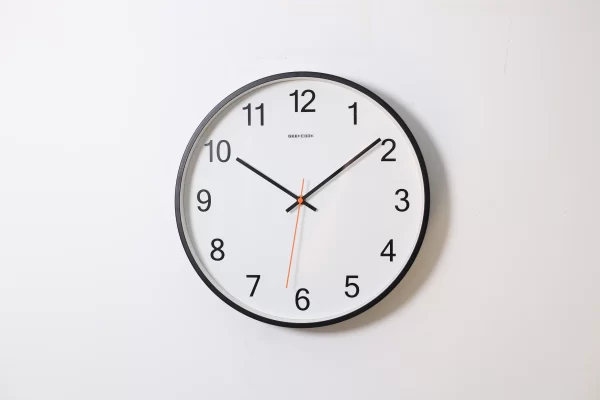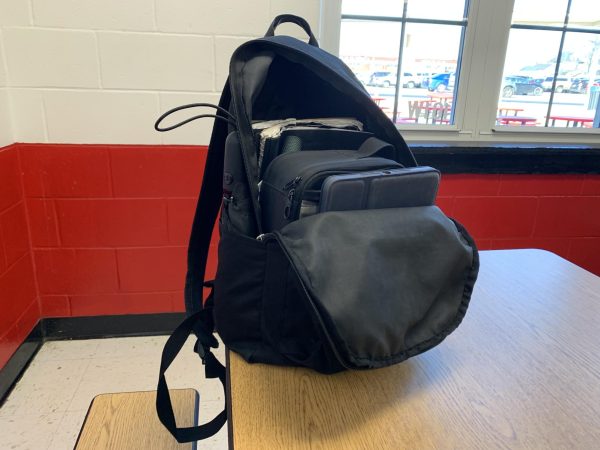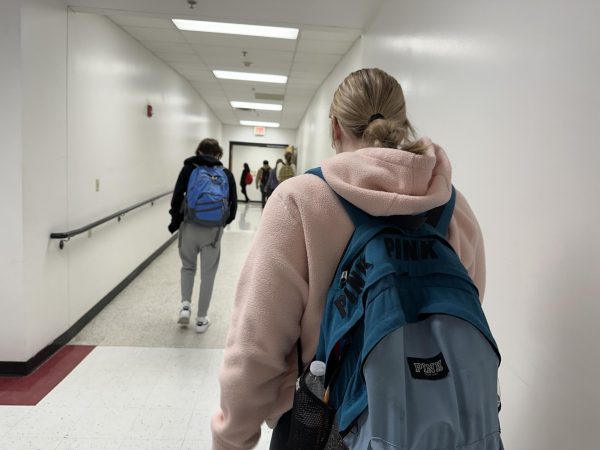The Tough Decision All High School Athletes Must Make
Senior Hayden Leavitt tees off on hole 14 at Mingo Bottom on Aug 25 in the annual City Cup Match versus Parkersburg South.
One of the biggest questions that high school athletes have to ask themselves is if they want to play their sport at a collegiate level. The recruiting process can officially begin the summer of sophomore year, however most athletes usually begin towards the end of junior year and continue throughout senior year. While the process varies, most athletes must do a lot of the recruiting process by themselves, such as finding schools they are interested in and getting in contact with coaches. While there are recruiting sites to make it easier, the process is difficult and time consuming. According to scholarshipstats.com, a little over 7% of athletes play collegiately at a varsity level. Only 2% play Division 1.
A lot goes into deciding whether or not to play a sport in college, like deciding if they want to prioritize their sport or their education. The colleges they might get offers from may not be the right fit academically and socially. If an athlete wants to go to a large school but they only get offers from smaller schools, the student will have to choose between if they want to play their sport or if they want a bigger school. For some, like senior Hayden Leavitt, the decision was easy.
“I’ve always loved the idea of playing at a higher level than just high school sports, so every place I toured I looked at their golf program because schooling is a priority for me,” said Leavitt.
He plans on majoring in biology at The University of Mount Union, which competes at the Division 3 level. Leavitt met the coach while on a campus tour. Before committing to Mount Union, he did most of the recruiting process by himself. He started picking up a golf club at the age of five, but didn’t start taking golf seriously until sixth grade when he played on his middle school’s golf team.
“The way I got into golf seriously was because of a garage sale of all things. While walking down my neighborhood’s streets looking at different garage sales, I found one that was selling putters for 25 cents each, naturally I bought one. One just down the street was selling a driver for $20. I told the man I didn’t have $20 so he gave it to me for ten. That’s how I started,” said Leavitt.
Some athletes like senior Madison Marks have decided to take a different approach for their college careers and chosen to focus on school versus athletics.
“I decided to not play because I stopped loving softball and I always want to remember softball as something I enjoyed, not something I was forced to do,” said Marks.
Although she hasn’t ruled out walking on to play softball at Ohio University, she doesn’t plan on playing as of right now. Marks plans on majoring in biology and spending her free time working on CrossFit and “life in general.” She is looking forward to having more free time in the spring. Marks, who played softball for 11 years, started because of her cousin, who she looked up to.
“I am proud of my high school career and I feel like I have done the best I could with what I was given due to COVID,” said Marks.
COVID-19 was a major setback to athletes in the class of 2023 because many of them lost an entire season of their sport. Spring sports in 2020 were canceled while the fall season had many precautions and changes to the typical schedule. Missing this season cost many athletes the chance to win a championship or title, something that makes recruiting much easier because it makes the student stand out more among their thousands of competitors.
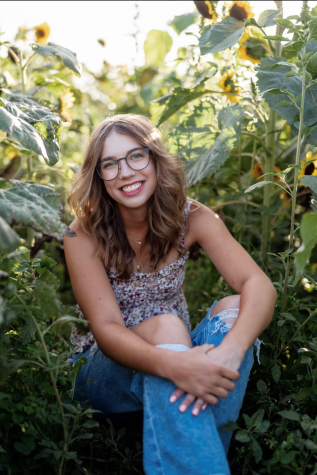
Anna Earl is a senior and has been on the newspaper staff for three years, serving this year as editor in chief. She spends most of her time in the journalism...

